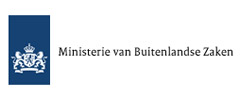Armenia: Toxic Dump Threatens Health
“…landslides have moved it 10 meters away [from its original location] and the result is that toxic chemicals leak into soil…”
12.06.2007 |Sascha Gabizon
8 June 2007
Toxic Trouble: Dumping area seen as hazard
By Arpi Harutyunyan
Ecologists representing an environmental organization say a 25-year-old, 500 ton capacity dump of toxic chemicals in Erebuni community is on the verge of collapse, threatening the population of the Yerevan neighborhoods of Vardashen and Verin Jrashen.
“The history of the deposit has come close to its logical end: vast precipitation, damaged system of water drainage and landslides have moved it 10 meters away [from its original location] and the result is that toxic chemicals leak into soil,” says Yelena Manvelyan, chairwoman of Armenian Women for Health and Healthy Environment NGO. For several years now, the organization tries to solve the problem of the dump.
A survey held by the NGO in 2005 showed concentration of toxic chemicals in soil in the neighboring territory exceeds the permitted level for up to several hundreds times.
“Penetration of any organic contaminant into the human organism – whether through air, food or water, facilitates formation of cancerous neoplasm. Toxic chemicals affect particularly immune, neural and reproduction systems and cause lung and kidney complications,” says Anahit Davtyan of the Center for Hygiene Epidemic Control and Prevention Hygiene, speaking in general about the potential hazards caused by the deteriorating dump.
The cemetery that is now in the suburban Erebuni community of Yerevan was built in 1982. During the soviet era some chemical agents were prohibited for the use in agriculture in Armenia in 1972 and were collected and dumped in the Erebuni cemetery. The chemicals included also persistent chlorine organic substances that do not decompose for 30-40 years.
“We warned as early as in 1982 that the territory of the deposit is on a slope and is on a landslide area and that its creation there had to be excluded,” says Ruben Yadoyan, head of Laboratory for Geo-Ecology at the National Academy of Sciences of Armenia. “Landslides became more active because of construction works.”
Yadoyan says research showed that the chemicals were dumped, then covered by soil, not by concrete, as ordered.
The concerns also regard the fruits and vegetables as well as dairy and milk products produced in the neighboring settlements, because many elements of the chemicals may penetrate into human organism through the products.
“There is sheep wool on the territory. So, logically, there might be toxic elements also in the dairy produce,” says chairwoman of Social-Environmental Association Srbuhi Harutyunyan.
Based on the results of different studies the NGO addressed the government of Armenia. The outcome of their effort was the interagency commission created in 2004.
According to the RA governmental decision of 2004 some 15.5 million Armenian drams (nearly $35,000) were allotted to the Emergency Management Agency for the purpose of undertaking measures to provide safety from chemical agents.
“The work was done: the territory was fenced up and water drainage pipes were set. But the fact is there are landslides there and they are likely to become more frequent,” says Mikayel Ghazaryan, deputy head of Agency for Population and Territorial Protection of the Rescue Service of Armenia.
However, the last survey by Armenian Women for Health and Healthy Environment NGO revealed the fortification either was not done in a proper manner or it was useless.
“We visited the cemetery early in May again. The picture is the same. There water was not drained and, consequently, it formed a lake. Besides, there were new landslides that were not there before,” says Simonyan.
Armenia ratified the Stockholm Convention on Persistent Organic Pollutants in 2003. The document obliges that the state neutralizes the toxic chemicals allowing the use of any means except burning for that purpose.
In 2006 the Emergency Management Agency addressed the government offering to appeal to a French organization and found that about 1.5 million euros would be need to clean the site.
Anahit Alexandryan, head of the Department for Management of Hazardous Agents and Wastes at the Ministry of Environmental Protection also realizes the seriousness of the problem.
“The question was raised and endorsed by a protocol decision in 2002, which says the cemetery is subject to liquidation in case of available financial means. The [Stockholm] Convention provides that developed countries support those in transition, but the procedure has become too complicated as it needs serious preliminary investments by the state, which is still unable to make them,” says Alexandryan.

































